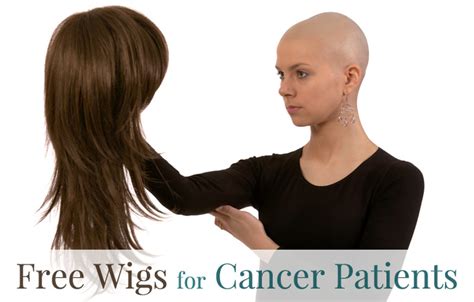Cancer treatment often results in hair loss, a side effect that can be emotionally challenging. Wigs offer a way to reclaim a sense of normalcy and self-confidence. Here’s a comprehensive guide to wigs for cancer sufferers:

Functions of Wigs
Wigs are essential for cancer survivors because they:
- Enhance Appearance: Restore hair volume and conceal hair loss, improving overall appearance.
- Boost Confidence: Rejuvenate self-esteem by providing a more positive body image.
- Protect Scalp: Shield the scalp from sun exposure, wind, and other elements during healing.
- Reduce Stress: Lessen the psychological distress associated with hair loss.
Types of Wigs
There are two main types of wigs:
- Synthetic Wigs: Made from synthetic fibers, these wigs are budget-friendly, easy to maintain, and come in a wide range of styles and colors.
- Human Hair Wigs: Luxurious wigs crafted from real human hair. They are more expensive but offer a natural look, feel, and durability.
Choosing the Right Wig
Selecting the perfect wig involves considering:
- Shape and Size: Measure head circumference and determine face shape to ensure a snug and flattering fit.
- Color and Length: Match hair to your natural color or experiment with new shades. Choose a length that complements your lifestyle and preferences.
- Texture and Style: Consider the texture of your own hair and choose a wig with a similar feel. Explore various styles to find one that aligns with your personality.
Care and Maintenance
Proper care extends the life of a wig:
- Washing: Wash human hair wigs with gentle shampoo and conditioner; synthetic wigs require specific synthetic-friendly products.
- Styling: Use heat styling tools sparingly and follow manufacturer’s instructions to avoid damage.
- Storage: Store wigs on a mannequin or in a silk cap to prevent tangling and deformation.
Insurance Coverage
Many insurance policies cover the cost of wigs for cancer patients. According to the American Cancer Society, the average insurance coverage for wigs ranges from $350 to $1,500.
Emotional Benefits
Wigs can have a profound impact on the emotional well-being of cancer survivors:
- Empowerment: A wig gives a sense of control over one’s appearance, fostering a sense of autonomy.
- Resilience: It symbolizes strength and resilience, reminding survivors of their ability to overcome challenges.
- Connection: Wigs can connect survivors with a supportive community of fellow cancer patients and advocates.
Tips for Choosing the Perfect Wig
- Consult a Healthcare Professional: Your doctor or nurse can provide advice and referrals for wig specialists.
- Explore Different Options: Try on various wigs before making a decision to find the one that suits you best.
- Consider Your Lifestyle: Choose a wig that fits your daily routine and activities.
- Seek Emotional Support: Connect with support groups, counselors, or other cancer survivors to share experiences and gain encouragement.
Frequently Asked Questions
1. How long do wigs typically last?
Synthetic wigs can last for several months to a year, while human hair wigs can last for years with proper care.
2. Can I wear a wig while undergoing chemotherapy?
Yes, it is recommended to wear a wig during chemotherapy to protect the scalp from the effects of treatment.
3. How often should I wash my wig?
Synthetic wigs should be washed every 6-8 weeks, while human hair wigs require more frequent washing, every 2-3 weeks.
4. Can I style my wig with heat?
Styling synthetic wigs with heat is not recommended as it can damage the fibers. Human hair wigs can be styled with heat, but it is important to use low heat settings and heat protectant spray.
5. What is the average cost of a wig?
Synthetic wigs range from $50 to $200, while human hair wigs can cost anywhere from $500 to $3,000.
6. How can I get my wig covered by insurance?
Contact your insurance company to inquire about coverage policies for wigs. Some insurance providers may require a prescription from your doctor.
7. Where can I find wig resources and support?
– American Cancer Society: https://www.cancer.org/
– Look Good Feel Better: https://lookgoodfeelbetter.org/
– Hair Toppers: https://hairtoppers.com/
Conclusion
Wigs offer cancer survivors a way to regain a sense of normalcy, boost their confidence, and protect their scalp. Choosing the right wig and maintaining it properly is crucial. By embracing the transformative power of wigs, cancer survivors can enhance their physical and emotional well-being during and after treatment.
